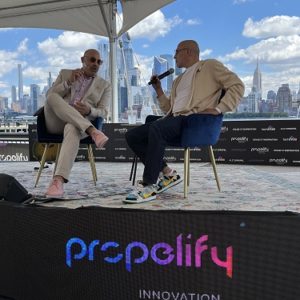Rutgers Pioneers Licensing Its Technology Through IP Exchange
When most people think about exchanges, they think of ways to trade stocks or options. Back in December, NJTechWeekly.com received a notice from Rutgers University that the school had joined, as a founding member, a new exchange established to market intellectual property (IP). IP, in layman’s terms, includes any idea or process a company or university has patented, trademarked or copyrighted, usually those produced through research over the years. IP accounts for $5.5 trillion of the U.S. economy.
Rutgers has joined Intellectual Property Exchange International (IPXI), a startup funded by a group of U.S. and European investors including CBOE Holdings, parent of the Chicago Board Options Exchange (CBOE), the largest U.S. options exchange, and Royal Philips Electronics. IPXI is expected to start trading some time in 2012.
NJTechWeekly.com was curious about this new market for research patented by N.J.’s premier state university and why Rutgers had chosen to pursue an unconventional path to selling its licenses. We interviewed Dipanjan Nag, Ph.D., MBA and executive director of the Rutgers Office of Technology Commercialization, who is credited with bringing the idea to the attention of Rutgers.
Traditionally universities negotiate individual contracts with potential buyers of their IP. Why is there a need for another way to handle this? Why begin an exchange market for IP?
There are two main challenges in IP: the lack of transactions and the lack of liquidity in the marketplace. If you look at every other major part of our economy, almost every asset class can be traded except IP.
Over the past 20 years the government has invested approximately $600 billion in research grants to universities. Yet only about a quarter of a million inventions have been created and fewer than 150,000 filed as patent applications, of which only 50,000 U.S. patents have been issued. Approximately 40,000 licenses have been created from these technologies. There aren’t many technologies coming out of universities that get licensed to the marketplace.
IP created at universities like Rutgers faces additional challenges. One is the lack of liquidity, but the other is that these are very early-stage inventions, and most are meant to be incorporated into a larger piece of a technology portfolio. So when a university comes up with a patentable, critical invention, it probably isn’t a technology that will result in an entire product being brought to market. However, it will usually alleviate a critical bottleneck in getting a class of technology to market.
These are enabling technologies, and many times they won’t be licensed to just one company but rather to 50 different ones through a non-exclusive license. It becomes challenging for universities like Rutgers, which have limited resources, to pursue 50 different licenses to 50 different licensees. From a logistics standpoint, it becomes a huge challenge to license a single technology 50 or 100 times.
The exchange will allow a technology to be licensed more efficiently. As a hypothetical, let’s take a battery technology that can be licensed by a number of battery manufacturers. On the exchange, the license will be priced in lots of thousands of units of batteries manufactured. Any of the manufacturers can buy the technology on the basis of unit licensing rights. If they use the rights within a certain period of time, all is well. If they don’t use them, the rights expire and return to the exchange to be put up for re-licensing.
Does Rutgers have technologies like this?
Rutgers does have technologies that can be used by many participants in an industry. I am thinking of our cranberry technology licenses, which are being used by hundreds of Ocean Spray growers. It becomes very complex for us to license the technology to many growers. This model will be better for us for non-exclusive licensing of a single technology to many users.
How will prices be set?
The technology will go on the market with a preset price, similar to the opening price of an IPO. Let’s say we put our battery technology on the market for $1 per thousand batteries. If there is enough demand in the marketplace, that demand will create a deficit that might increase the price of each unit’s licensing rights. The initial price will be set collaboratively between Rutgers and IPXI.
For Rutgers, what is the bottom line? How will this exchange help the university?
We want to make sure an efficient market for IP is created, and an exchange environment and marketplace system are a more efficient way to get that IP to the licensee. IPXI promises to cut down on the amount of time it takes to go through the licensing and negotiation process and decrease bureaucracy on both sides.
Are there other stakeholders in the IP that Rutgers has to consider before putting a technology on the IPXI market?
Technically speaking, Rutgers is the IP holder. If the research was performed under federally funded government grants, all the IP created within Rutgers by grad students, professors, postdocs and so on is Rutgers property. That right was extended to universities through the Bayh–Dole Act in 1980. Research funded by private companies is a different story, and each contract defines how much of the research is owned by the company and how much can be shared, but typically the university owns the research. However, there are always a lot of stakeholders and we always go to the responsible faculty members or researchers to get them to buy in to the process. At the end of the day, a technology will not be successful unless the faculty member makes a full commitment to ensuring the technology is actually commercialized and gets into the product.


